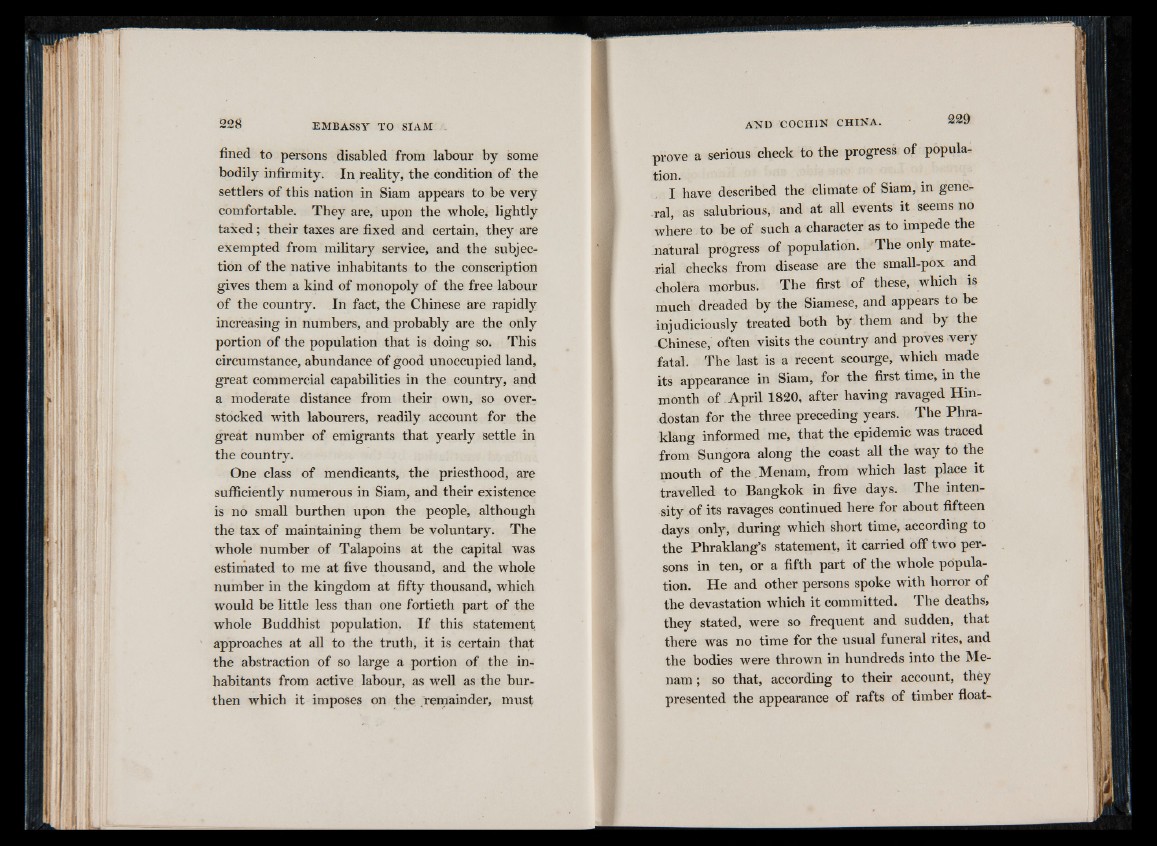
fined to persons disabled from labour by some
bodily infirmity. In reality, the condition of the
settlers of this nation in Siam appears to be very
comfortable. They are, upon the whole, lightly
taxed; their taxes are fixed and certain, they are
exempted from military service, and the subjection
of the native inhabitants to the conscription
gives them a kind of monopoly of the free labour
of the country. In fact, the Chinese are rapidly
increasing in numbers, and probably are the only
portion of the population that is doing so* This
circumstance, abundance of good unoccupied land,
great commercial capabilities in the country, and
a moderate distance from their own, so overstocked
with labourers, readily account for the
great number of emigrants that yearly settle in
the country.
One class of mendicants, the priesthood, are
sufficiently numerous in Siam, and their existence
is no small burthen upon the people, although
the tax of maintaining them be voluntary. The
whole number of Talapoins at the capital was
estimated to me at five thousand, and the whole
number in the kingdom at fifty thousand, which
would be little less than one fortieth part of the
whole Buddhist population. I f this statement,
approaches at all to the truth, it is certain that
the abstraction of so large a portion of the inhabitants
from active labour, as well as the burthen
which it imposes on the remainder, must
prove a serious check to the progress of population.
I have described the climate of Siam, in general,
as salubrious, and at all events it seems no
where to be of such a character as to impede the
natural progress of population. The only material
checks from disease are the small-pox and
cholera morbus. The first of these, which is
much dreaded by the Siamese, and appears to be
injudiciously treated both by them and by the
Chinese, often visits the country and proves very
fatal. The last is a recent scourge, which made
its appearance in Siam, for the first time, in the
month of April 1820, after having ravaged Hindostán
for the three preceding years. The Phra-
klang informed me, that the epidemic was traced
from Sungora along the coast all the way to the
mouth of the .Menam, from which last place it
travelled to Bangkok in five days. The intensity
of its ravages continued here for about fifteen
days only, during which short time, according to
the Phraklang’s statement, it carried off two persons
in ten, or a fifth part of the whole population.
He and other persons spoke with horror of
the devastation which it committed. The deaths,
they stated, were so frequent and sudden, that
there was no time for the usual funeral rites, and
the bodies were thrown in hundreds into the Me-
n am ; so that, according to their account, they
presented the appearance of rafts of timber float